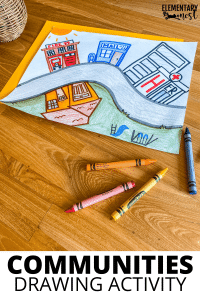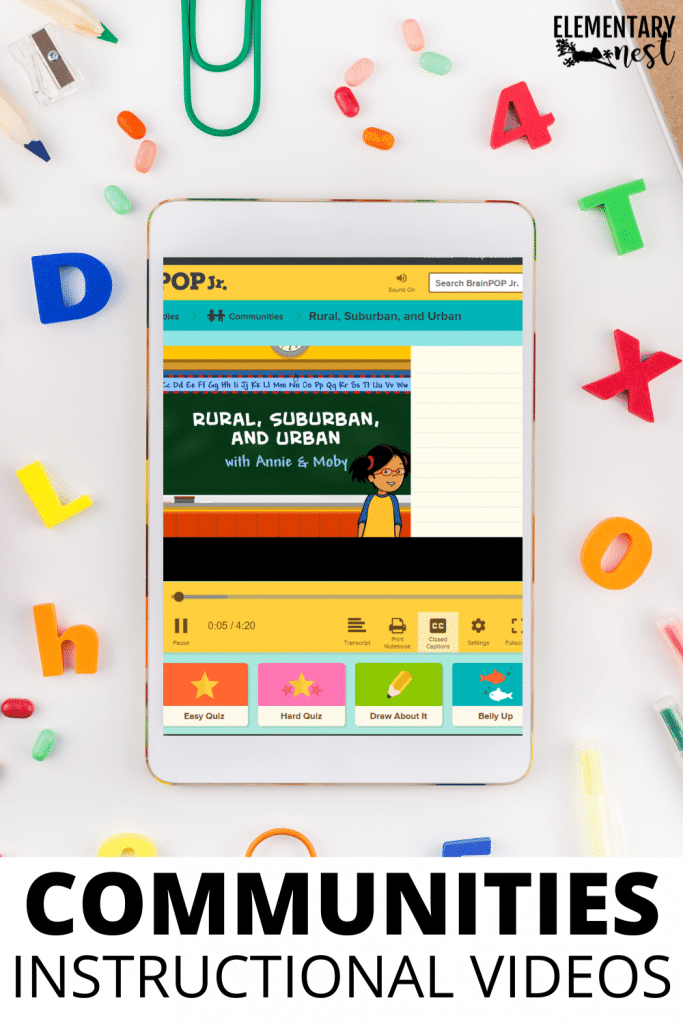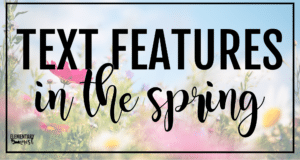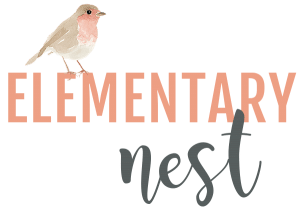
A large part of your primary social studies content will be about communities! It is important for students to learn about the world that is around them. Today, I am going to talk briefly about some activities that can help kids learn about communities!
Collect Prior Knowledge on Communities

First, you will want to find out what kids already know. What do they think of when you use the word, “community”? After a brief definition and clarification discussion, create a prior knowledge/schema chart. This can be done with a piece of chart paper and a marker. At the top of the page, write the word, “communities.” Then, have a class discussion, noting or listing things your students can think of in their own community.
Start by Teaching 3 Big Types of Communities
Next, you will be able to move into types of communities. When teaching types of communities, the focus will remain on The Big Three: rural, urban, and suburban communities. I often recommend using a BrainPop, Jr. video when introducing a topic like this one. The videos have clear and relatable explanations that your students will love! Plus, the additional digital features can be added to your instruction throughout the unit.
Another way to help your kids learn about communities is to use printable activities. The ones above include a reading comprehension passage and two fact sheets. These are great for independent or partner work! They are also a quick and easy way to assess (and reinforce) their understanding of the topic!
Discuss What They Might Find
After learning about community types, you will be able to narrow your focus on communities. Now, it is time to talk about the places you will find! Going back to your initial chart, students will be able to build on their knowledge of the types of places they can find in their community.
There are a few ways to do this. First, you can create a presentation of places. Create a simple PowerPoint, where each slide has a type of “place,” building or otherwise, that can be found in communities. Show each slide, facilitating a discussion about the place: What is this place? What does it do for the community? Do we have one in our community? Etc. You can even print the slides as “Handouts” with 6 or 9 slides per page, having the student match the place to their description.
Another resource will be the printable social studies activities. Students can read about “Places in a Community” and cut & paste or organize information on the charts. These activities can be done independently, with partners, or even in small groups! Add them to your reading centers for cross-curricular integration!
Teach Them All About Helpers & Services
Then, it is time to talk COMMUNITY HELPERS! Community helpers are always a big hit with the kiddos. It helps them connect with the content, thinking about which community helper they may want to be! BrainPop, Jr. has another excellent overview video on community helpers and services. Use activities that focus on what services helpers provide to the community, like the printable ones above.
If you’d like a project, you can assign community helper roles to your students! Have a community helper “fair” or presentation. Students can dress up as their community helper, create a digital presentation or a poster, etc!
Relate It to Their Own World to Help Kids Learn About Communities

It is also important for students to think about their own community. A simple art project is a great way to include this in your unit. Assign your students a drawing activity that requires them to draw a snapshot of their community. They will need to include the things they’ve learned about communities, including the type of community and places they will find. You can even require them to include some of the people they may see within their community. If your kiddos need some guidance, suggest places such as schools, parks, libraries, etc.
A Suggested Product that Will Make Your Life Easier!
If you are looking for an all-inclusive, no-prep product, the Communities No-Prep Social Studies Unit is just for you! Activities include informational reading passages, cut and paste activities, and graphic organizers. The unit covers an introduction to communities, places in communities, community helpers and services, three types of communities, homes, transportation, and celebrating differences! You can buy it on TPT or on my website Elementary Nest.


























